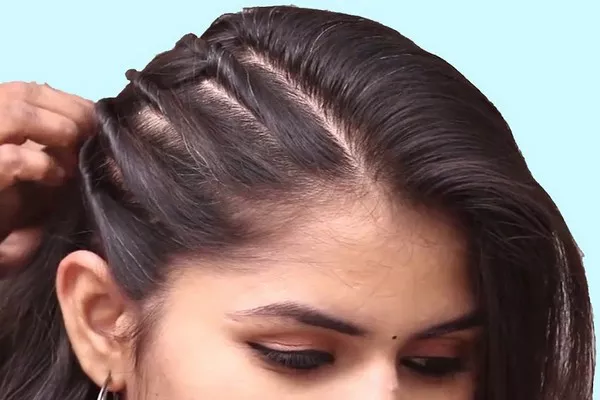In a world where beauty is celebrated, luscious and vibrant hair is often considered a prized possession. However, for some individuals, their tresses can transform into a source of frustration as they battle with dryness and brittleness. Why is my hair so dry and brittle? This perplexing question haunts many, prompting us to delve into the underlying causes and potential solutions for this hair dilemma.
I. The Hair Structure and Moisture Balance
Our hair is composed of three layers: the cuticle, cortex, and medulla. The cuticle, the outermost layer, acts as a protective shield for the inner layers. It is the primary defense against environmental stressors and moisture loss. When the cuticle is damaged or weakened, the hair loses its ability to retain moisture, resulting in dryness and brittleness.
II. Environmental Factors: The Culprits Behind Dry Hair
Excessive Heat Styling: Frequent use of hot tools like straighteners, curling irons, and blow dryers can strip the hair of its natural moisture, leading to dryness and brittleness. The intense heat breaks down the proteins in the hair, making it vulnerable to damage.
Overexposure to the Sun: Prolonged exposure to the sun’s harsh ultraviolet (UV) rays can have detrimental effects on the hair. UV radiation degrades the hair’s protein structure, disrupts the moisture balance, and weakens the cuticle, leaving the hair dry, dull, and prone to breakage.
Environmental Humidity: Contrary to popular belief, high humidity levels can also contribute to dry hair. Excessive moisture in the air causes the hair to absorb water, which may lead to swelling of the hair shaft. This expansion weakens the cuticle, making it more susceptible to damage and ultimately resulting in dryness.
III. Chemical Overload: The Impact of Hair Treatments
Excessive Coloring and Bleaching: The pursuit of fashion-forward hair colors often involves harsh chemical processes. Frequent coloring and bleaching can disrupt the hair’s natural pH balance, strip away essential oils, and weaken the cuticle, leading to dryness and breakage.
Chemical Relaxers and Perms: Chemical relaxers and perms alter the hair’s structure by breaking the disulfide bonds. While these treatments can provide temporary styling convenience, they also weaken the hair, making it more prone to dryness and brittleness over time.
IV. Lifestyle and Health Factors: An Inside Story
Nutritional Deficiencies: A balanced diet rich in vitamins, minerals, and proteins is essential for healthy hair. Inadequate intake of nutrients like biotin, iron, zinc, and essential fatty acids can lead to dryness and brittleness.
Hydration: Dehydration affects not only our bodies but also our hair. Insufficient water intake can result in dry and brittle hair, as the body prioritizes the distribution of water to vital organs, leaving the hair shafts parched.
Underlying Health Conditions: Dry and brittle hair can also be a symptom of underlying health conditions such as hypothyroidism, hormonal imbalances, and certain autoimmune disorders. Consulting a healthcare professional can help identify and address these potential causes.
V. Hair Care Practices: Balancing Moisture and Nourishment
Proper Shampooing and Conditioning: Using a gentle, sulfate-free shampoo and a moisturizing conditioner helps maintain the hair’s moisture balance. Avoiding hot water during hair washes and rinsing with cool water can help seal the cuticle and lock in moisture.
Deep Conditioning Treatments: Incorporating regular deep conditioning treatments into your hair care routine can replenish moisture and nourish dry, brittle hair. Look for products containing hydrating ingredients like argan oil, shea butter, or coconut oil. Applying a hair mask or hot oil treatment once a week can work wonders in restoring your hair’s vitality.
Limiting Heat Styling: Minimize the use of heat styling tools and opt for heat-free styling methods whenever possible. Embrace your natural hair texture or explore alternative styling techniques like braiding, twisting, or air-drying. If heat styling is necessary, use a heat protectant spray to minimize damage.
Protective Styling: Protecting your hair from environmental stressors and friction can prevent dryness and breakage. Consider hairstyles that keep the ends of your hair tucked away, such as braids, buns, or updos. Additionally, using satin or silk pillowcases and avoiding tight hair accessories can reduce friction and minimize damage.
Healthy Diet and Hydration: Nourish your hair from the inside out by maintaining a well-balanced diet rich in vitamins, minerals, and proteins. Include foods like fruits, vegetables, whole grains, lean meats, and fatty fish in your meals. Additionally, drink an adequate amount of water daily to keep your body and hair hydrated.
Regular Trims: Split ends and damaged hair can exacerbate dryness and brittleness. Schedule regular trims every six to eight weeks to remove split ends and promote healthier hair growth. This will prevent further damage and improve the overall appearance and texture of your hair.
Seek Professional Advice: If you’ve tried various hair care practices without success, it may be beneficial to consult a professional hairstylist or trichologist. They can assess your hair’s condition, provide personalized recommendations, and suggest specialized treatments or products tailored to your needs.
Conclusion:
Dry and brittle hair can be a frustrating and confidence-diminishing issue, but understanding the underlying causes can pave the way for effective solutions. Environmental factors, chemical treatments, lifestyle choices, and health conditions all play a role in the health of our hair. By adopting a holistic approach that focuses on nourishment, protection, and proper hair care practices, you can restore your hair’s moisture balance and reclaim its natural shine and vitality. So, bid farewell to dry and brittle hair and embrace a future of lustrous locks. Remember, with the right knowledge and care, you hold the key to unlocking your hair’s true potential.

